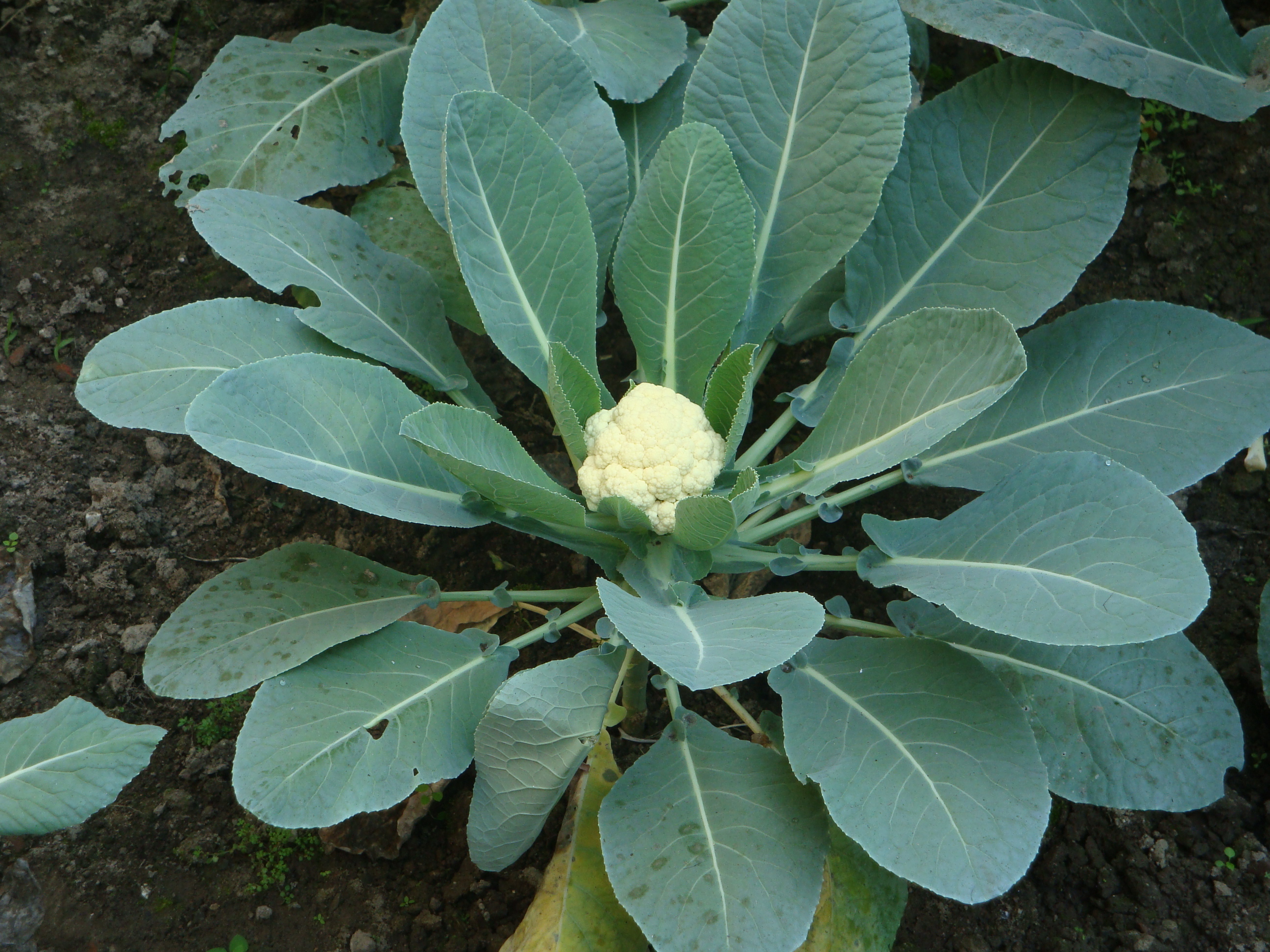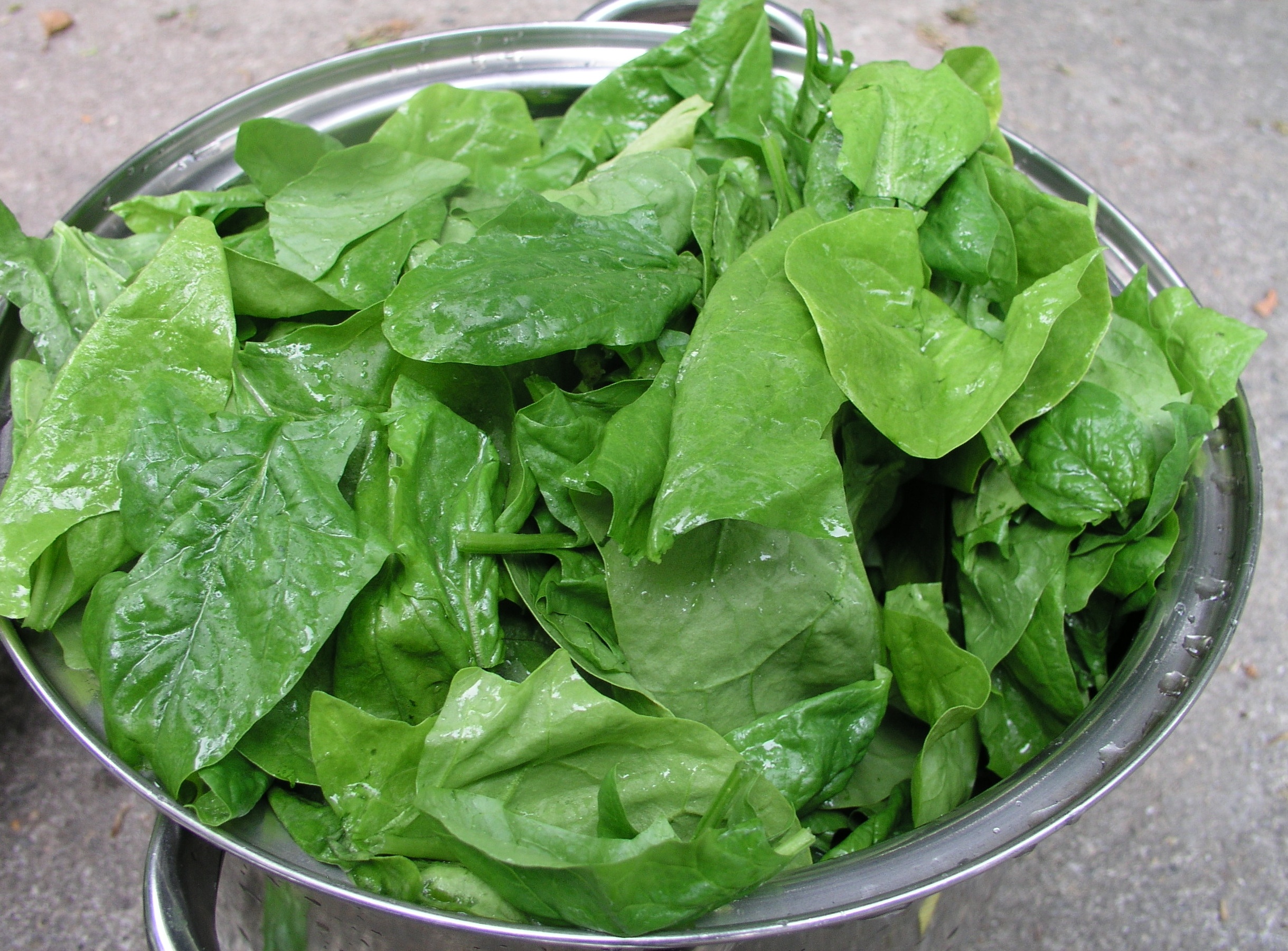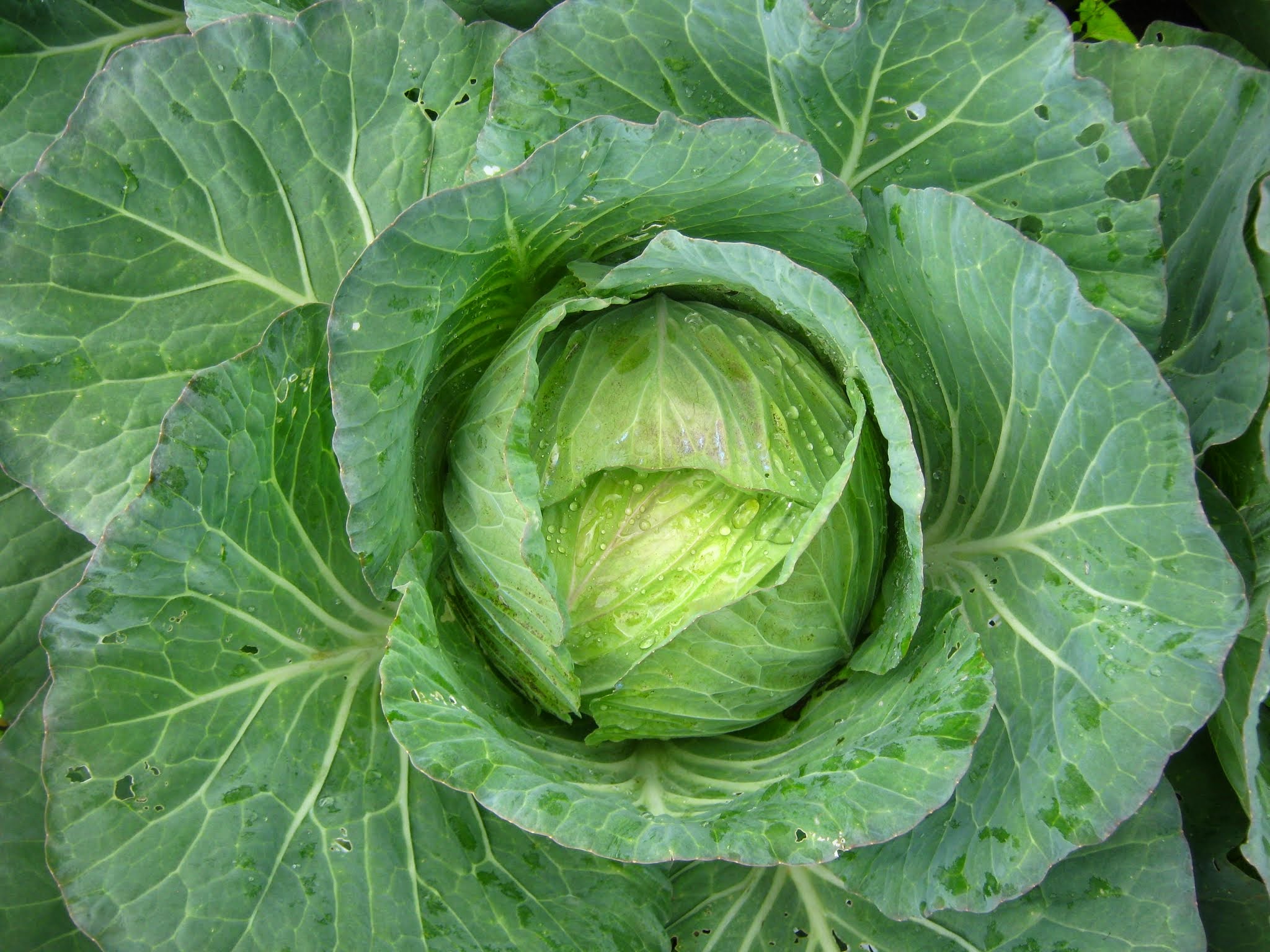|
KALE
Kale (), also called leaf cabbage, belongs to a group of cabbage (''Brassica oleracea'') cultivars primarily grown for their Leaf vegetable, edible leaves; it has also been used as an ornamental plant. Its multiple different cultivars vary quite a bit in appearance; the leaves can be bumpy, curly, or flat, and the color ranges from purple to green. Description Kale plants have green or purple leaves, and the central leaves do not form a head, as with headed cabbage. The stems can be white or red, and can be tough even when cooked. Etymology The name ''kale'' originates from Northern Middle English ''cale'' (compare Scots language, Scots ''kail'' and German ''Kohl'') for various cabbages. The ultimate origin is Latin ''caulis'' 'cabbage'. Cultivation Derived from wild mustard, kale is considered to be closer to wild cabbage than most domesticated forms of ''B. oleracea''. Kale is usually a biennial plant grown from seed with a wide range of germination temperatures. It is ... [...More Info...] [...Related Items...] OR: [Wikipedia] [Google] [Baidu] |
Brassica Oleracea
''Brassica oleracea'', also known as wild cabbage in its uncultivated form, is a plant of the family Brassicaceae. The species originated from feral populations of related plants in the Eastern Mediterranean, where it was most likely first cultivated. It has many common cultivars used as vegetables, including cabbage, broccoli, cauliflower, kale, Brussels sprout, Collard (plant), collard, Savoy cabbage, kohlrabi, and gai lan. Description Wild ''B. oleracea'' is a tall biennial plant, biennial or perennial plant that forms a stout Rosette (botany), rosette of large leaves in the first year. The grayish-green leaves are fleshy and thick, helping the plant store water and nutrients in difficult environments. In its second year, a woody spike grows up to tall, from which branch off stems with long clusters of yellow four-petaled flowers. Taxonomy Origins According to the Triangle of U theory, ''B. oleracea'' is very closely related to five other species of the genus ... [...More Info...] [...Related Items...] OR: [Wikipedia] [Google] [Baidu] |
Tuscan Cabbage
Lacinato kale, also known as Tuscan kale, Italian kale, dinosaur kale, kale, flat back kale, palm tree kale, black Tuscan palm, or, in Italian and often in English, , is a variety of kale from the Acephala group of cultivars ''Brassica oleracea'' grown for its edible leaves. Lacinato has a long tradition in Italian cuisine, especially that of Tuscany, where it has been grown for centuries, and it is one of the traditional ingredients of minestrone and ribollita. Description Lacinato kale grows tall and has dark blue-green leaves with an "embossed texture"; its taste is described as "slightly sweeter and more delicate" than curly kale and "slightly bitter ndearthy". The lacinato variety is sometimes called ''dinosaur kale'' because its bumpy leaves may resemble what dinosaur skin looked like, and perhaps because the unique appearance of the leaves is evocative of primordial flora. Because of its taste, it has been called "the darling of the culinary world". Preparation an ... [...More Info...] [...Related Items...] OR: [Wikipedia] [Google] [Baidu] |
Kai-lan
Gai lan, kai-lan, Chinese broccoli, or Chinese kale (''Brassica oleracea'' var. ''alboglabra'') is a leafy vegetable with thick, flat, glossy blue-green leaves with thick stems, and florets similar to (but much smaller than) broccoli. A ''Brassica oleracea'' cultivar, gai lan is in the group ''alboglabra'' (from Latin ''albus'' "white" and ''glabrus'' "hairless"). When gone to flower, its white blossoms resemble that of its cousin '' Matthiola incana'' or hoary stock. The flavor is very similar to that of broccoli, but noticeably stronger and slightly more bitter. Cultivation Gai lan is a cool season crop that grows best between . It withstands hotter summer temperatures than other brassicas such as broccoli or cabbage. Gai lan is harvested around 60–70 days after sowing, just before the flowers start to bloom. The stems can become woody and tough when the plant bolts. It is generally harvest for market when tall however it can also be produced as "baby gai lan." The "b ... [...More Info...] [...Related Items...] OR: [Wikipedia] [Google] [Baidu] |
Leaf Vegetable
Leaf vegetables, also called leafy greens, vegetable greens, or simply greens, are plant leaves eaten as a vegetable, sometimes accompanied by their petioles and shoots, if tender. Leaf vegetables eaten raw in a salad can be called salad greens, whereas leaf vegetables eaten cooked can be called pot herbs. Nearly one thousand species of plants with edible leaves are known. Leaf vegetables most often come from short-lived herbaceous plants, such as lettuce and spinach. Woody plants of various species also provide edible leaves. The leaves of many fodder crops are also edible for humans, but are usually only eaten under famine conditions. Examples include alfalfa, clover, and most grasses, including wheat and barley. Food processing, such as drying and grinding into powder or pulping and pressing for juice, may involve these crop leaves in a diet. Leaf vegetables contain many typical plant nutrients, but their vitamin K levels are particularly notable since they are photos ... [...More Info...] [...Related Items...] OR: [Wikipedia] [Google] [Baidu] |
Jersey Kale
The Jersey cabbage (''Brassica oleracea longata'') is a variety of cabbage native to the Channel Islands that grows to a great height and was formerly commonly used there as livestock fodder and for making walking sticks. It is also known as Jersey kale or cow cabbage, and by a variety of local names including giant cabbage, long jacks, tree cabbage and the French ''chour'' and ''chou à vacque''. The 'Jersey cabbage' develops a long stalk, commonly reaching in height, and can grow as tall as . Historically the stalks were made into walking sticks, of which 30,000 a year were being sold by the early 20th century, many for export.; republishePlant Portraits Royal Botanic Gardens, Kew (pdf) They were also used for fencing and as rafters. Much of the stalk is bare; the islanders stripped leaves to accentuate this effect and induce it to grow without twisting, varnished the stalk, and created a handle either by heat-treating and bending the root end or by planting at an angle to pr ... [...More Info...] [...Related Items...] OR: [Wikipedia] [Google] [Baidu] |
Headed Cabbage
Cabbage, comprising several cultivars of ''Brassica oleracea'', is a leafy green, red (purple), or white (pale green) biennial plant grown as an annual vegetable crop for its dense-leaved heads. It is descended from the wild cabbage ( ''B. oleracea'' var. ''oleracea''), and belongs to the " cole crops" or brassicas, meaning it is closely related to broccoli and cauliflower (var. ''botrytis''); Brussels sprouts (var. ''gemmifera''); and Savoy cabbage (var. ''sabauda''). A cabbage generally weighs between . Smooth-leafed, firm-headed green cabbages are the most common, with smooth-leafed purple cabbages and crinkle-leafed savoy cabbages of both colours being rarer. Under conditions of long sunny days, such as those found at high northern latitudes in summer, cabbages can grow quite large. , the heaviest cabbage was . Cabbage heads are generally picked during the first year of the plant's life cycle, but plants intended for seed are allowed to grow a second year and must b ... [...More Info...] [...Related Items...] OR: [Wikipedia] [Google] [Baidu] |
Cabbage
Cabbage, comprising several cultivars of '' Brassica oleracea'', is a leafy green, red (purple), or white (pale green) biennial plant grown as an annual vegetable crop for its dense-leaved heads. It is descended from the wild cabbage ( ''B. oleracea'' var. ''oleracea''), and belongs to the " cole crops" or brassicas, meaning it is closely related to broccoli and cauliflower (var. ''botrytis''); Brussels sprouts (var. ''gemmifera''); and Savoy cabbage (var. ''sabauda''). A cabbage generally weighs between . Smooth-leafed, firm-headed green cabbages are the most common, with smooth-leafed purple cabbages and crinkle-leafed savoy cabbages of both colours being rarer. Under conditions of long sunny days, such as those found at high northern latitudes in summer, cabbages can grow quite large. , the heaviest cabbage was . Cabbage heads are generally picked during the first year of the plant's life cycle, but plants intended for seed are allowed to grow a second year and m ... [...More Info...] [...Related Items...] OR: [Wikipedia] [Google] [Baidu] |
Croatia
Croatia, officially the Republic of Croatia, is a country in Central Europe, Central and Southeast Europe, on the coast of the Adriatic Sea. It borders Slovenia to the northwest, Hungary to the northeast, Serbia to the east, Bosnia and Herzegovina and Montenegro to the southeast, and shares a maritime border with Italy to the west. Its capital and largest city, Zagreb, forms one of the country's Administrative divisions of Croatia, primary subdivisions, with Counties of Croatia, twenty counties. Other major urban centers include Split, Croatia, Split, Rijeka and Osijek. The country spans , and has a population of nearly 3.9 million. The Croats arrived in modern-day Croatia, then part of Illyria, Roman Illyria, in the late 6th century. By the 7th century, they had organized the territory into Duchy of Croatia, two duchies. Croatia was first internationally recognized as independent on 7 June 879 during the reign of Duke Branimir of Croatia, Branimir. Tomislav of Croatia, Tomis ... [...More Info...] [...Related Items...] OR: [Wikipedia] [Google] [Baidu] |
USDA
The United States Department of Agriculture (USDA) is an United States federal executive departments, executive department of the Federal government of the United States, United States federal government that aims to meet the needs of commercial farming and livestock food production, promotes agricultural trade and production, works to assure food safety, protects natural resources, fosters rural communities and works to end hunger in the United States and internationally. It is headed by the secretary of agriculture, who reports directly to the president of the United States and is a member of the president's Cabinet of the United States, Cabinet. The current secretary is Brooke Rollins, who has served since February 13, 2025. Approximately 71% of the USDA's $213 billion budget goes towards nutrition assistance programs administered by the Food and Nutrition Service (FNS). The largest component of the FNS budget is the Supplemental Nutrition Assistance Program (formerly ... [...More Info...] [...Related Items...] OR: [Wikipedia] [Google] [Baidu] |
David Fairchild
David Grandison Fairchild (April 7, 1869 – August 6, 1954) was an American botanist and plant explorer. Fairchild was responsible for the introduction of more than 200,000 exotic plants and varieties of established crops into the United States, including soybeans, pistachios, mangos, nectarines, dates, bamboos, and flowering cherries. Certain varieties of wheat, cotton, and rice became especially economically important. Early life and education Fairchild was born in Lansing, Michigan and was raised in Manhattan, Kansas. He was a member of the Fairchild family, descendants of Thomas Fairchild of Stratford, Connecticut. He graduated from Kansas State College of Agriculture (B.A. 1888, M.S. 1889) where his father, George Fairchild, was president. He continued his studies at Iowa State and at Rutgers with his uncle, Byron Halsted, a noted biologist. He received an honorary D.Sc. degree from Oberlin College in 1915. Career Barbour Lathrop, a wealthy world traveler, ... [...More Info...] [...Related Items...] OR: [Wikipedia] [Google] [Baidu] |
Smithsonian (magazine)
''Smithsonian'' is a magazine covering science, history, art, popular culture and innovation. The first issue was published in 1970. History The history of ''Smithsonian'' began when Edward K. Thompson, the retired editor of ''Life'' magazine, was asked by then-Secretary of the Smithsonian, S. Dillon Ripley, to produce a magazine "about things in which the Smithsonian nstitutionis interested, might be interested or ought to be interested." Thompson later recalled that his philosophy for the new magazine was that it "would stir curiosity in already receptive minds. It would deal with history as it is relevant to the present. It would present art, since true art is never dated, in the richest possible reproduction. It would peer into the future via coverage of social progress and of science and technology. Technical matters would be digested and made intelligible by skilled writers who would stimulate readers to reach upward while not turning them off with jargon. We would fin ... [...More Info...] [...Related Items...] OR: [Wikipedia] [Google] [Baidu] |
Ornamental Kale
Ornamental may refer to: * Ornamental grass, a type of grass grown as a decoration * Ornamental iron, mild steel that has been formed into decorative shapes, similar to wrought iron work *Ornamental plant, a plant that is grown for its ornamental qualities *Ornament (architecture), a decorative detail used to embellish parts of a building or interior furnishing *Ornament (art) *Ornament (music) In music, ornaments or embellishments are musical flourishes—typically, added notes—that are not essential to carry the overall line of the melody (or harmony), but serve instead to decorate or "ornament" that line (or harmony), provide added ..., musical flourishes that are not necessary to the overall melodic (or harmonic) line Music *Ornamental, a music group formed as a side project of Strawberry Switchblade vocalist Rose McDowall See also * Ornament (other) {{disambig ... [...More Info...] [...Related Items...] OR: [Wikipedia] [Google] [Baidu] |






